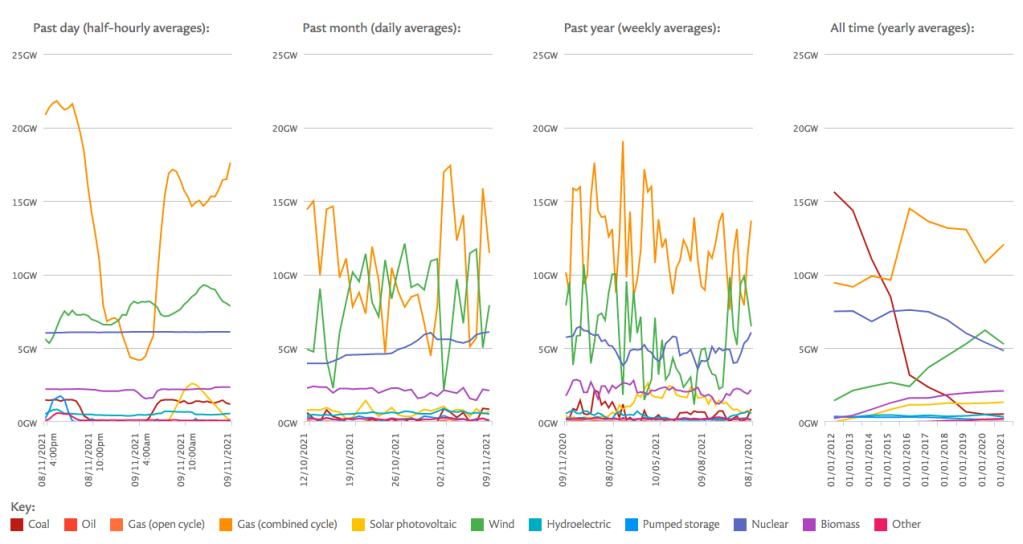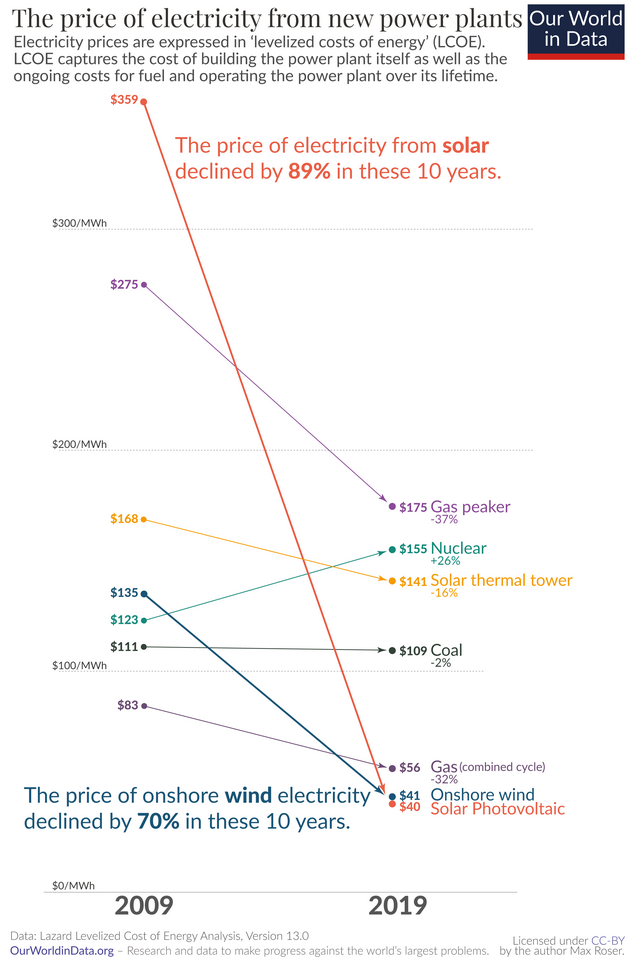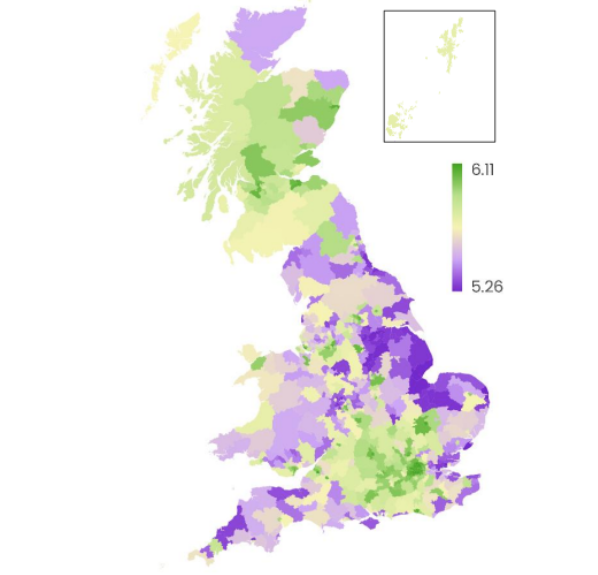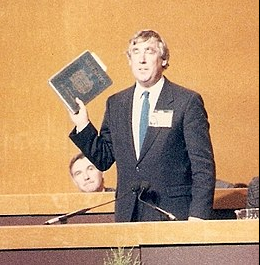Recently American magazine The Atlantic published a feature titled ‘How the U.S. Could Slash Climate Pollution by 2030’, it was an unusually unsatisfying piece for an otherwise high-brow publication, short on context or detail. It skirted over the when, the how, the why and the how much – the basic tenets of journalism. America has had one President after another that has been indifferent or hostile to the green agenda I guess it’s understandable their internal debate has not caught up with the rest of the industrial world yet. Joe Biden is the greenest President ever (by default), if the US ever wakes up it will probably own most low carbon intellectual property, until then the UK is ahead of the curve in terms of implementation and technology. Unlike America we’ve got a pretty good idea of how to decarbonise because we’ve been doing it for a decade or more. Let’s take a look at how we can push things forward.

A Fossil Free future
Britain is on a path to net zero carbon emissions, there is a political consensus for that, the main debating points are how long it’s going to take us and how we’re going to do it. Sir Ed Davey recently stated that the Lib Dems policy is to have 80% of UK electricity generated by renewables by the year 2030. This is a stretch, but will be like moving from 4th gear to 5th gear in a car (I’ll get those combustion engine references in while people still understand them). Since 2010 renewables market share has moved from 6% to 40%, so the pace of change to get to 80% only has to increase slightly. It’s not quite as straightforward increasing the current forms of renewables to reach 80%, however, as the dominant form is wind – intermittent and unpredictable. As we phase out fossil fuels, all of which are ‘on demand’ and flexible, I.e. a thermal power plant can operate from 1% input to 100%, the reliance on electricity that is not constant – solar – or wind, which varies hugely, means we’ll have to deploy a lot of grid-balancing and storage infrastructure to keep the power flowing. Certain forms of renewable can be ‘on demand’ – biomass, biogas and geothermal, others such as wave and tidal can be constant – all of these are not deployed to scale in the UK yet but they all could be . . .

Lightning strikes twice
Many people I’ve spoken to who were hold outs against the transition to renewables I believe were instinctively clinging onto a raft – Britain has been incredibly lucky in having ample coal, oil and gas resources, which we’ve exploited hugely since the start of the Industrial Revolution. Why not just keep on drilling? Aside from the climate change aspect of fossil fuels, their supporters overlook the emasculating geo-politics of hydrocarbons – there’s been four oil shocks in my lifetime, and we’re currently suffering a gas hike, all of these are down to events far beyond the UK’s control – the Yom Kippur War, the Iranian Revolution, Iraq’s invasion of Kuwait and growth of demand in China. This winter’s gas bills will be painful, but we can make it our last hydrocarbon shock if we want to.
Renewables offer good news for the world and for the UK. Instead of countries being rich in hydrocarbons or totally deficient, every country around the world, even landlocked ones will be able to tap into at least one form of renewable power. Mongolia, for example could use solar PV, heat pumps and concentrated solar power. Hopefully this will blunt the scramble for energy resources and lead to a more equal and peaceful world in the future. The UK won the lottery with fossil fuels, we also strike lucky with renewables – we can tap into all the major ones. Two forms, we’re especially rich in – wind and tidal – we’re the windiest country in Europe and have some of the strongest tides in the world in places such as the Pentland Firth. The potential is huge, but nothing is inevitable so I’ve modelled a few scenarios for 2030:
Bad case
The UK only progresses to 60% renewables, it’s still dependent on significant nuclear and gas generation. There has been increases in deployment of wind, solar and biomass but the rate of installation has slowed compared to the 2012 – 2020 period.
Average case
The UK reaches 70% renewables, nuclear and gas are reduced but still in the mix. As wind is taking up a bigger share significant grid-balancing and storage is in operation, the UK has made tentative steps to tap into new forms of renewables – biogas, wave and tidal make up a few %.
Hitting target
We took some risks, we pioneered a load of technology but we made it to 80%! As imports make up 10%, nuclear and gas are reduced to a small rump of the electricity market. Wind has been capped at around 50% of the market and the remaining 30% is made up of already established solar and biomass, but the newest forms – biogas, wave, geothermal and tidal already feed several gigawatts into the National Grid.

For those who have got this far who are sceptical that this is possible or it’s a disruptive and costly change I would point out the following. If we had a conversation about electricity back in 2000, if you championed the existing forms of electricity and dismissed renewables it would be no surprise, aside from hydro no renewable had been deployed to scale around the world, the
rest all had to prove their worth. The increased commitment to renewables under the coalition government means that we’ve decarbonised our electricity by 67% between 2012 and 2021. The past nine years have shown that renewables can move from fringe to mainstream, they can do so very quickly and that there’s no significant increase in electricity bills by doing so. Going from 40% to 80% will be more difficult, it will cost more money. However, if you’re conservative you have to recognise the financial advisory maxim: ‘past performance is a good indicator of future outcomes’ – we can turn on the renewables tap and we can make it work, we know what that looks like. All of the forms of renewable power mentioned here are either available to deploy (wind, solar, biomass), have been proven to work in other countries (geothermal, tidal), or proof-of-concept has been shown and could be scaled up (biogas, wave, tidal). We’re not talking about end-of-the-rainbow tech like nuclear fusion.

In conjunction with COP26, the Think Tank Onward published a report ‘Thin Ice?’ This looks at changing attitudes in Britain to climate change and net zero policies. In an ideal world the UK public should have ‘got’ global warming the 1980s, climate science took a quantum leap thanks to the analysis of 140,000 years of ice core data which documented the long term carbon cycle and showed how temperatures since the start of the Industrial Revolution have gone off at a tangent (funnily enough this work was done by Soviet scientists at their Antarctic base before their oil drilling programme really took off). During the last decade, however, as we can see by the graph, acceptance of climate change has become a cultural norm.

Opinion varies slightly across the UK towards the concept of net zero, with heavily industrialised areas still less keen. What does this mean for the Lib Dems politically – pushing a strong green agenda in London and the South East is no problem, but what of our historic heartlands the South West and mid-Wales? If a selling job is possible then the potential for offshore wind, geothermal and tidal needs to be established for Cornwall and Devon, and biomass/biogas for mid-Wales. Overall I think the public has given the green light to clean energy and hope that future governments match the Lib Dems aspiration.

Liberals in the UK have made a huge contribution to the global environmental narrative – Lib Dems President Des Wilson’s push for cleaner air in the 1980s has prompted the worldwide eradication of lead from petrol. Sir Ed Davey’s policies in coalition have set a global template for decarbonisation in a major economy which is now being followed by the US, China and Japan, who have all set net zero policies in the last year. When the Chinese needed an expert to show them how to clean up their polluted cities they asked Sir Ed to appear on their version of Question Time – they know his work is globally significant. We are not the Green Party but we are part of the Green movement, and long may that continue.

Des Wilson – a hero to all Green Liberals